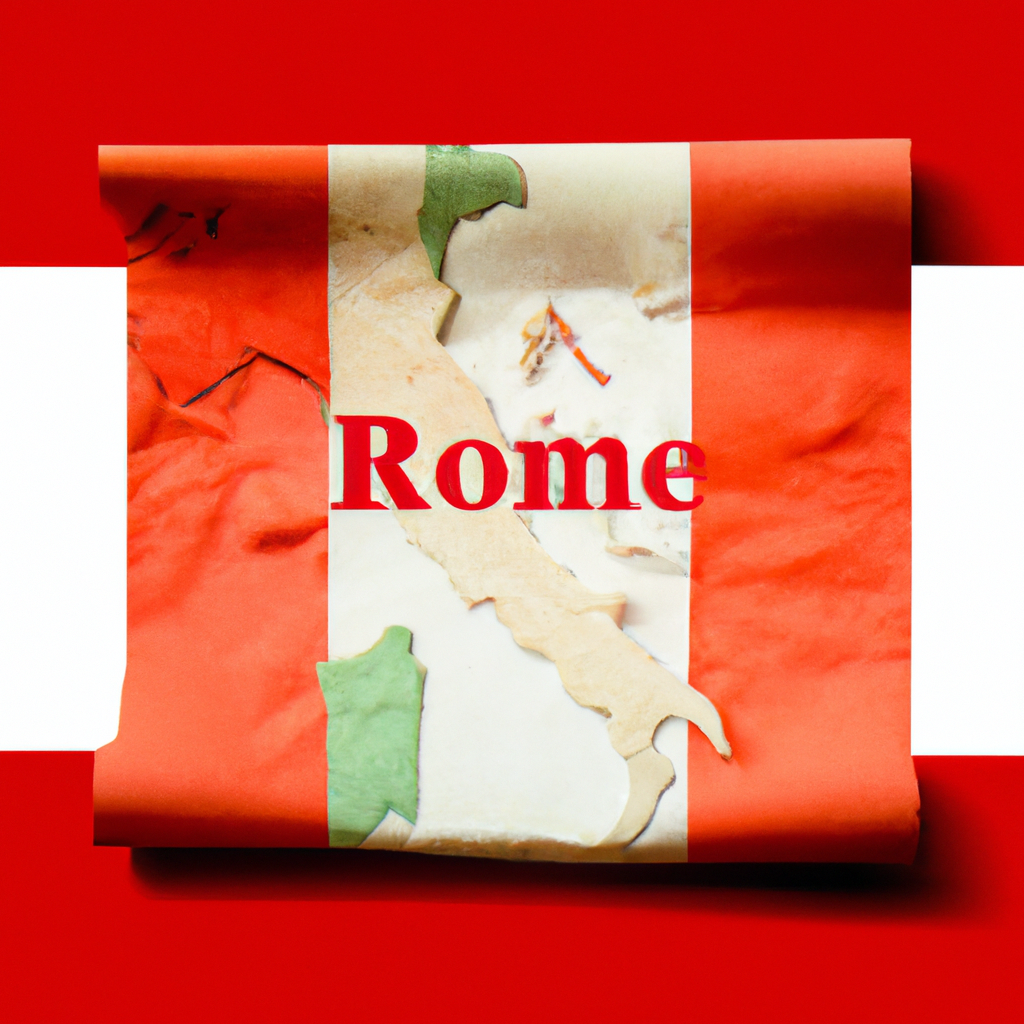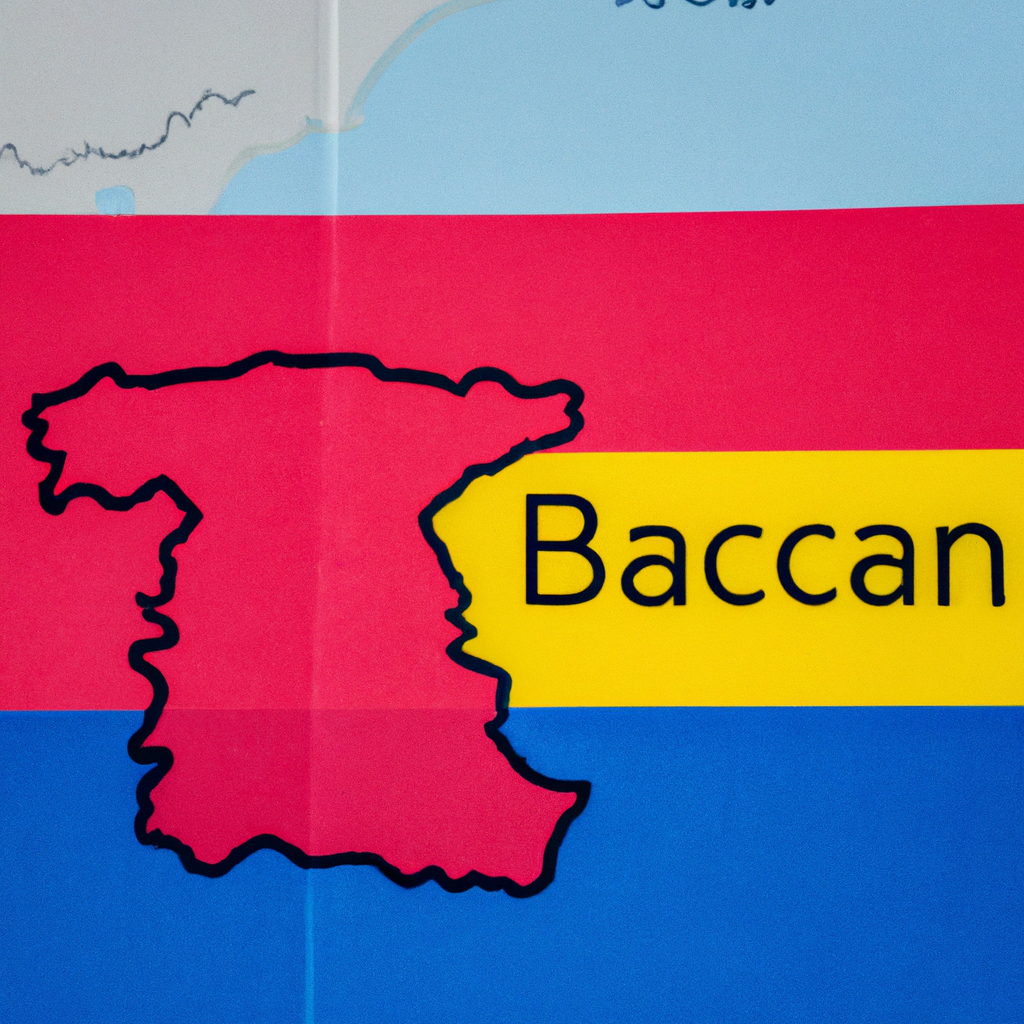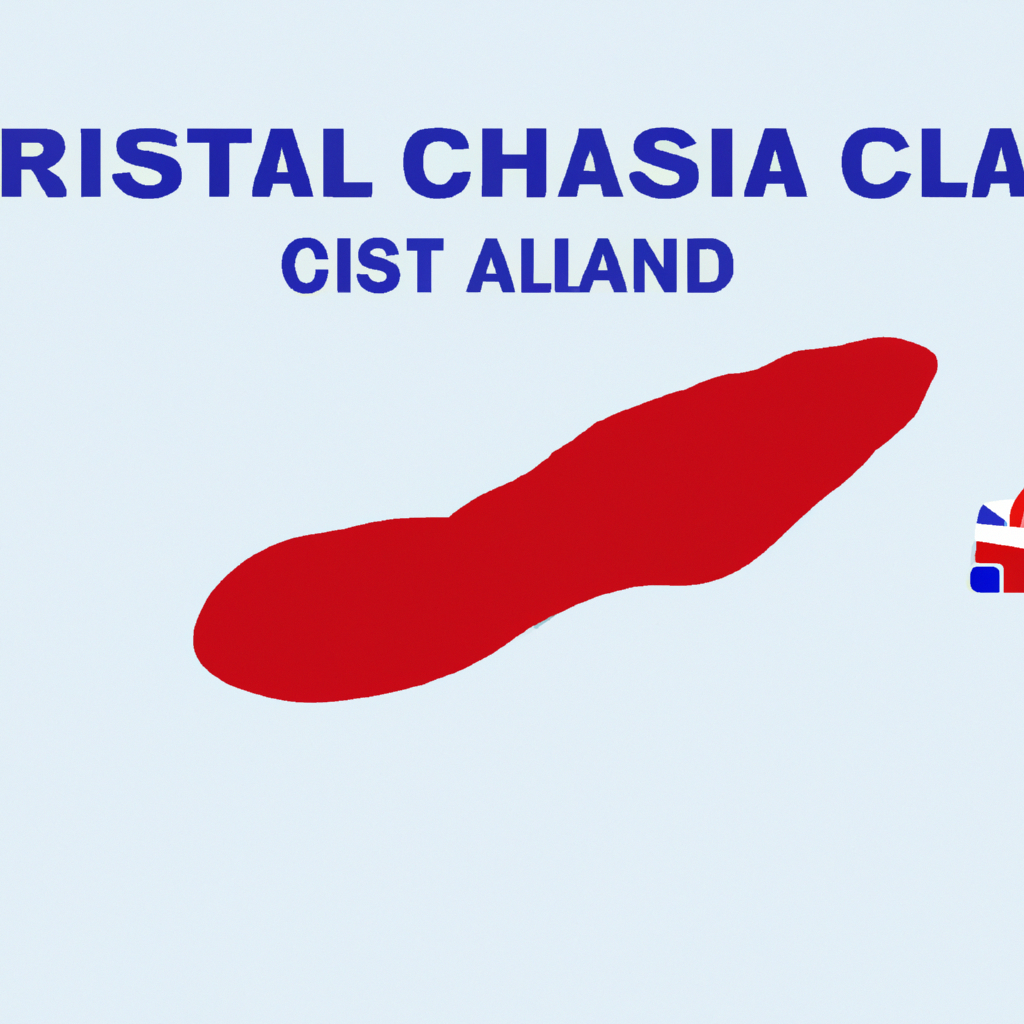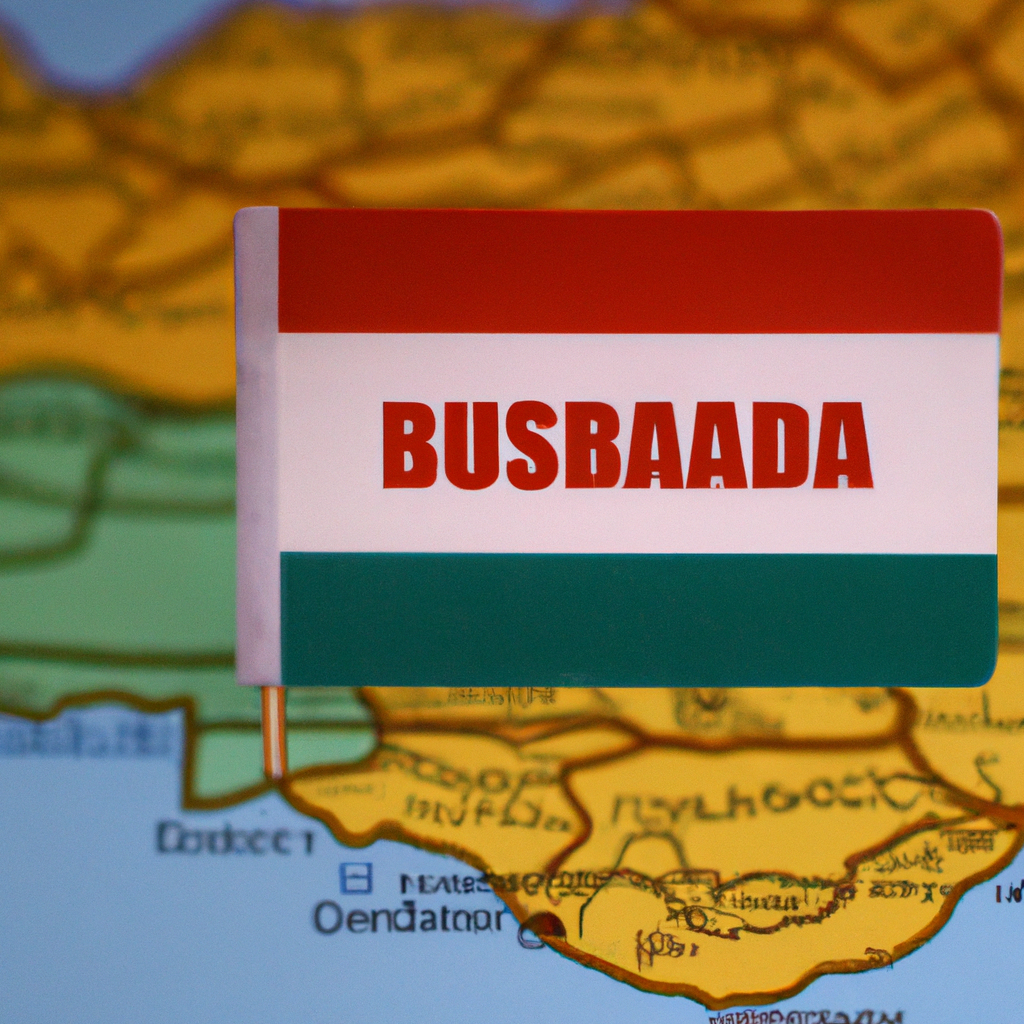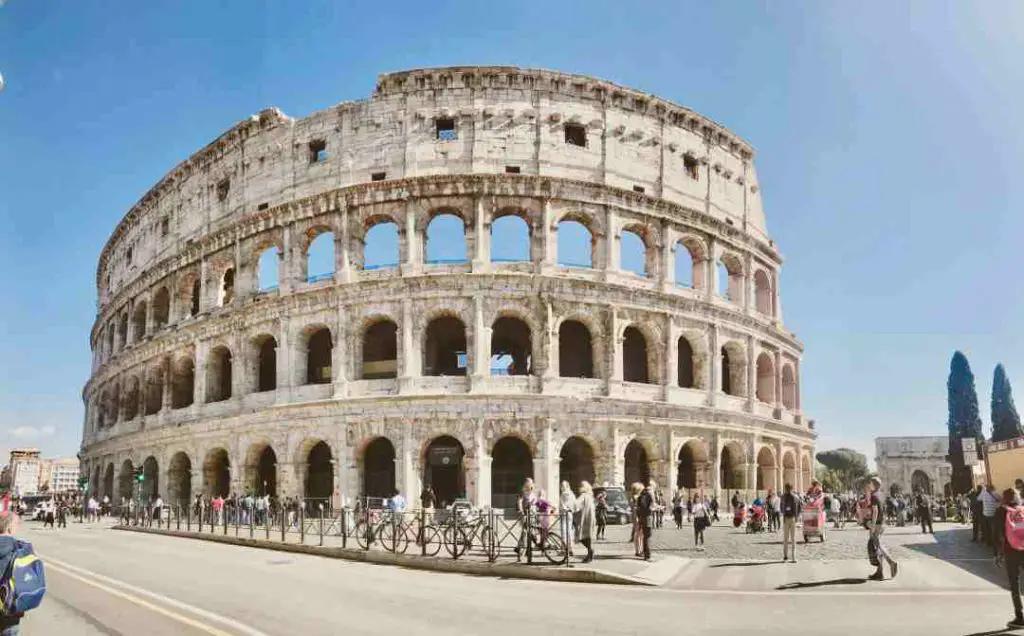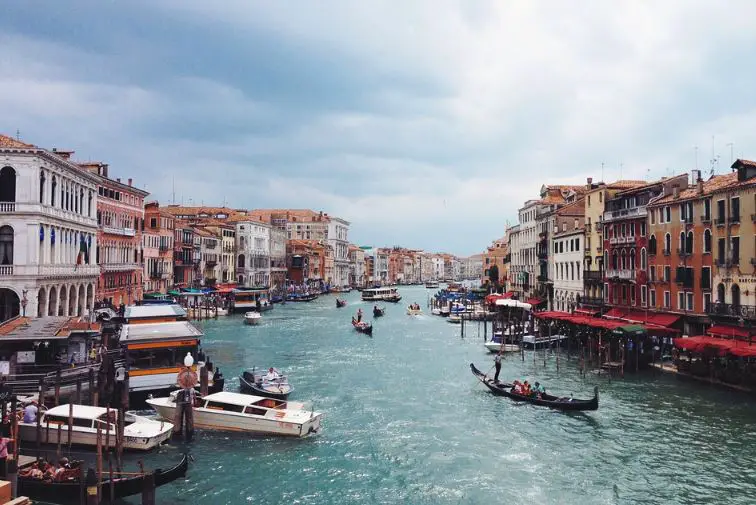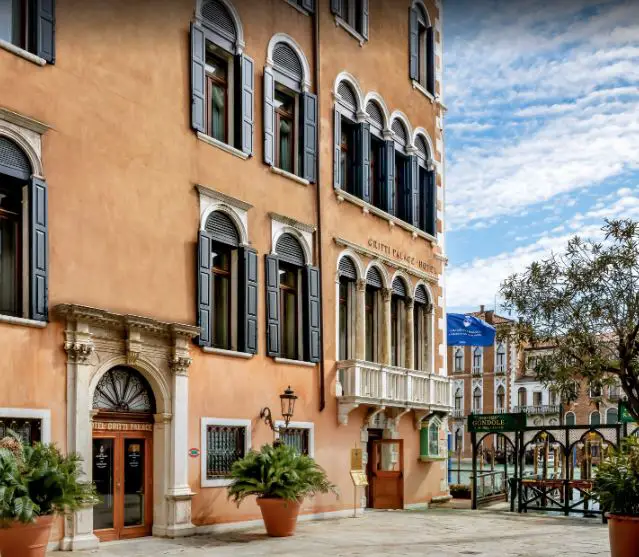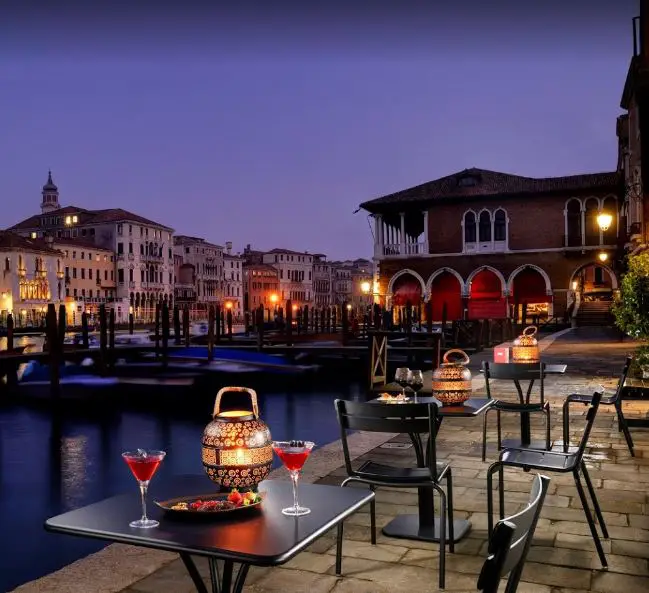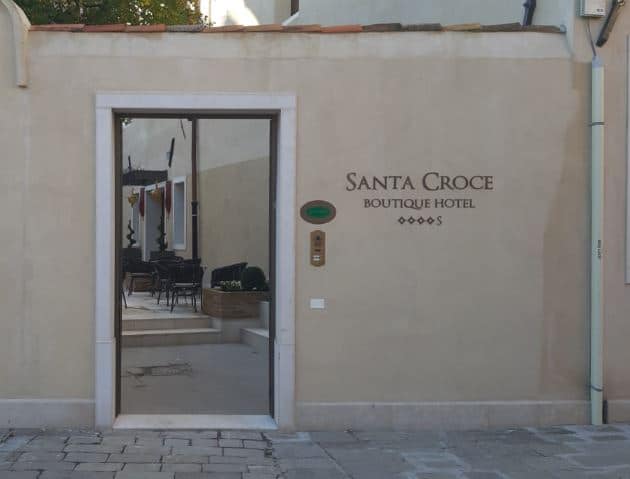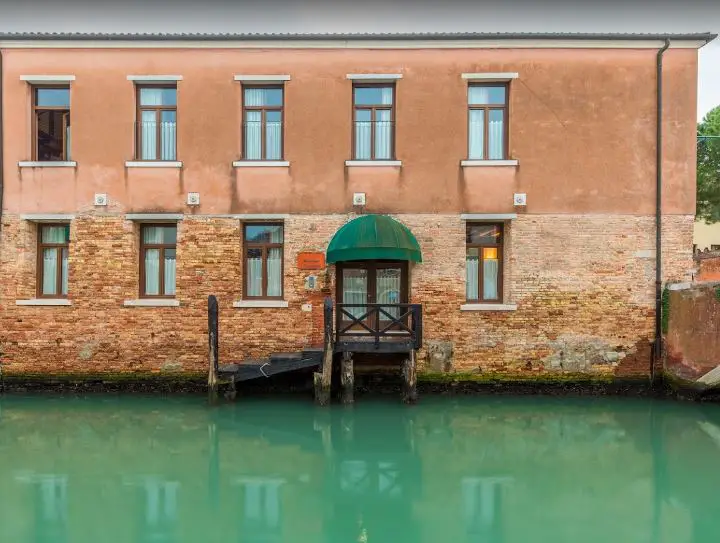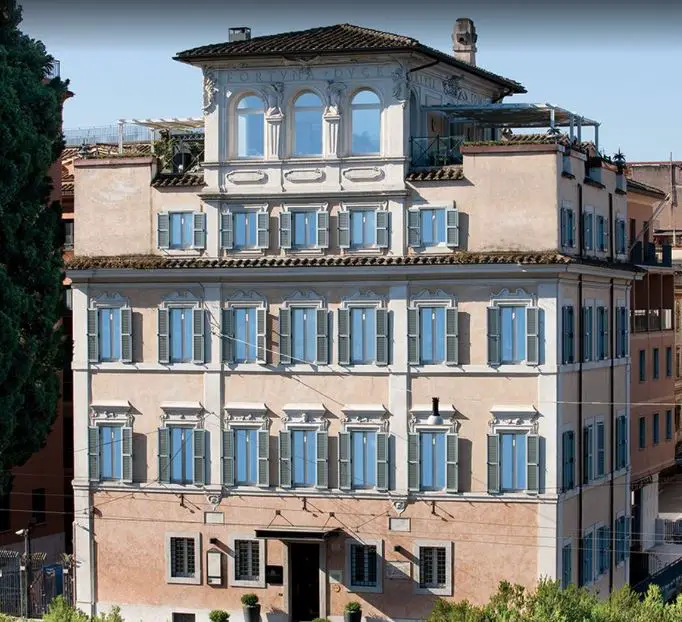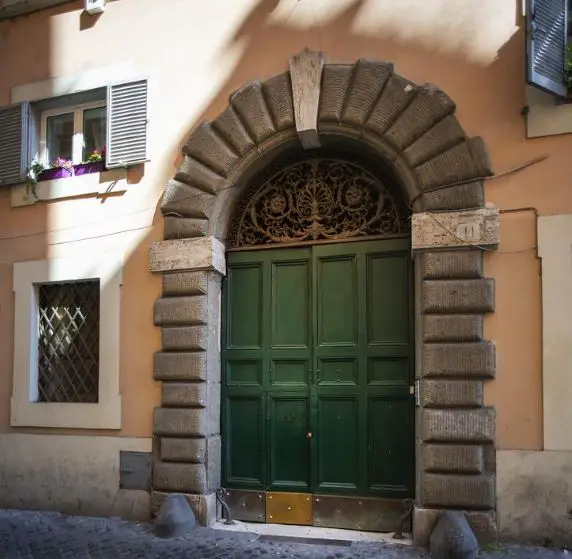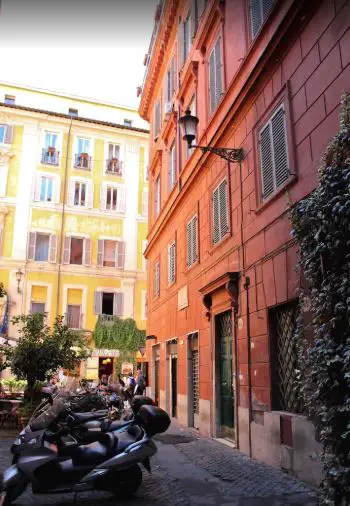Rome, Italy: Interesting Facts,History, Things to do,Why to Visit
Post ByAdequate Travel
Italy is a country located in Southern Europe, known for its rich history, vibrant culture, and beautiful landscapes. It is home to famous cities such as Rome, Venice, Florence, and Milan, each with its own unique charm and attractions.Italy has played a significant role in shaping the Western world, especially during the Roman Empire period, which left a lasting influence on architecture, law, and language. Its historical sites, such as the Colosseum, the Vatican City, and the ruins of Pompeii, attract millions of tourists each year.Italian cuisine is internationally renowned, with dishes like pizza, pasta, gelato, and espresso being popular worldwide. Wine production is also a significant part of Italian culture, with regions like Tuscany and Piedmont known for their quality wines.The country has a diverse landscape, with the stunning Amalfi Coast, the picturesque Italian Riviera, and the tranquil lakes in the north. It is also home to some of the world's most famous art collections, including the works of Michelangelo, Leonardo da Vinci, and Botticelli in museums like the Uffizi Gallery and the Vatican Museums.Italy faces its fair share of challenges, including a struggling economy, high public debt, and political instability in recent years. However, it remains a popular tourist destination and continues to contribute to various fields, such as fashion, design, and car manufacturing.Overall, Italy offers a perfect blend of history, culture, natural beauty, and delicious cuisine, making it a beloved destination for travelers from all over the world.Uncover the best Italy attractions that will leave you awe-inspired and wanting more.
Interesting facts
Food and Wine
Italy is known for its delicious food and exquisite wines. The country has a rich culinary tradition and is famous for popular dishes such as pasta, pizza, and gelato. Italian cuisine varies by region, with each area having its own specialties. For example, in Naples, you can find the original pizza margherita, while Bologna is renowned for its tortellini. Italy is also the birthplace of various types of pasta, including spaghetti, lasagna, and ravioli. Additionally, the country produces a wide range of wines, such as Chianti, Barolo, and Prosecco. The combination of excellent food and wine makes Italy a paradise for food lovers.Art and Culture
Italy is home to some of the world's most famous art and cultural treasures. The country has a long history of artistic and cultural achievements, with renowned painters, sculptors, and architects creating masterpieces throughout the centuries. The city of Florence, for example, is celebrated for its Renaissance art, including works by Michelangelo, Leonardo da Vinci, and Botticelli. Venice is known for its unique architecture and is famous for its canals and Venetian masks. Rome, the capital, hosts numerous archaeological sites, such as the Colosseum and the Roman Forum, showcasing the ancient Roman Empire's grandeur.Historical Landmarks
Italy is home to numerous historical landmarks that attract millions of tourists each year. The country's rich history is evident through its well-preserved ancient ruins, magnificent cathedrals, and stunning architectural wonders. One example is the Colosseum in Rome, the largest amphitheater ever built, which hosted gladiatorial contests and other public spectacles during the Roman Empire. Another iconic landmark is the Leaning Tower of Pisa, known worldwide for its distinctive tilt. Additionally, Italy boasts the ancient city of Pompeii, buried by volcanic ash from the eruption of Mount Vesuvius in 79 AD, providing an extraordinary glimpse into life in ancient Rome.Beautiful Coastlines and Landscapes
Italy is known for its breathtaking coastlines and diverse landscapes. From the stunning Amalfi Coast in Southern Italy to the picturesque Cinque Terre in Liguria, visitors can enjoy astonishing views and crystal-clear waters. The country is also home to beautiful lakes, such as Lake Como and Lake Garda in the north, surrounded by majestic mountains. Furthermore, Italy features several regions with stunning countryside landscapes, like Tuscany's rolling hills and vineyards or the breathtaking Dolomites in the northern part of the country. These natural wonders provide incredible opportunities for hiking, cycling, and exploring the great outdoors.Fashion and Design
Italy has long been recognized as a global trendsetter in fashion and design. The country is home to renowned fashion houses, including Gucci, Prada, and Versace. Italian fashion is associated with elegance, luxury, and impeccable craftsmanship. Cities like Milan are hubs for the fashion industry, hosting famous fashion weeks showcasing the latest trends. Italy's influence in design extends beyond fashion, with the country's contribution to architecture, interior design, and automotive design widely recognized. From iconic furniture brands like Kartell to innovative car manufacturers like Ferrari and Lamborghini, Italy's design heritage is evident in every aspect of life.From museums to parks,Italy tourist attractions offer something for everyone, making it a versatile destination for all type of tourists.History of Italy
The history of Italy is rich and diverse, dating back thousands of years. The Italian peninsula has been home to various ancient civilizations and empires, contributing greatly to the development of Western culture. Here are some major points highlighting Italy's historical journey:
1. Ancient Italy
Ancient Italy saw the rise and fall of several powerful civilizations, such as the Etruscans, Greeks, and Romans. The Romans, in particular, played a crucial role in shaping Italy's history and establishing one of the most significant empires in the world. They left behind a lasting legacy, including incredible architectural structures like the Colosseum and impactful legal systems that influenced European laws for centuries.
2. Middle Ages
During the Middle Ages, Italy became a fragmented region, with several city-states and kingdoms vying for power. These city-states, like Venice, Florence, and Genoa, emerged as prosperous trading centers, contributing to the development of banking, arts, and culture. The Renaissance, a period of great intellectual and artistic achievements, originated in Italy during this time, with iconic figures like Leonardo da Vinci, Raphael, and Michelangelo leaving their mark.
3. Unification and Modern Italy
In the 19th century, Italy underwent a process of unification known as the "Risorgimento." After various struggles and wars, the Kingdom of Italy was established in 1861, with Rome becoming its capital in 1870. Italy's unification brought together different regions and cultures under one political entity, allowing for social and economic development.
4. World Wars and Fascism
Italy played a significant role in both World War I and World War II. Benito Mussolini and his National Fascist Party came to power in the 1920s, establishing a fascist dictatorship. Mussolini aligned Italy with Nazi Germany during World War II, leading to its eventual defeat and the fall of fascism. Italy emerged from the war as a republic in 1946.
5. Modern Italy
Since its post-war reconstruction, Italy has experienced significant social, economic, and political developments. It became a founding member of the European Union in 1957 and has actively participated in efforts to promote European integration. Despite facing challenges, Italy remains a prominent cultural, artistic, and economic force in the world.
These are just a few highlights from Italy's vast and fascinating history. They showcase the country's enduring influence and contributions to various fields throughout the centuries.
Exploring the rich heritage of historical sites in Italy is a journey through time and culture.Famous Things of Italy
Italy is renowned for its rich history, stunning architectural wonders, art masterpieces, delicious cuisine, fashionable designs, and idyllic landscapes. Here are a few examples of famous things associated with Italy:
1. Ancient Roman Ruins
Italy is home to several ancient Roman ruins, which are a testament to the great civilization that once thrived there. The most famous of these ruins is the Colosseum in Rome, an iconic amphitheater that hosted gladiator games and public spectacles. Other notable examples include the Roman Forum, Pompeii, Herculaneum, and the Baths of Caracalla.
2. Renaissance Art
Italy is often referred to as the birthplace of the Renaissance, an era of cultural and artistic rebirth. Artists such as Leonardo da Vinci, Michelangelo, and Raphael created some of the most renowned masterpieces during this period. The Sistine Chapel in Vatican City, adorned with Michelangelo's frescoes, is a clear example of the extraordinary art produced during the Renaissance.
3. Italian Cuisine
Italian cuisine is beloved worldwide, known for its simple yet flavorful dishes. From pasta and pizza to gelato and tiramisu, Italian food has a diverse range that caters to various tastes. Each region in Italy offers its own culinary specialties, such as Neapolitan pizza, Tuscan ribollita, and Sicilian cannoli.
4. Fashion and Design
Italy is synonymous with fashion and design, boasting world-famous brands like Gucci, Prada, Versace, and Armani. Milan, known as the fashion capital of the world, hosts prestigious fashion events such as Milan Fashion Week. Italian designers are renowned for their exquisite craftsmanship, attention to detail, and elegant style.
5. UNESCO World Heritage Sites
Italy boasts the highest number of UNESCO World Heritage Sites in the world, reflecting its diverse cultural and natural heritage. These include the historic centers of Rome, Florence, and Venice, the archaeological sites of Pompeii and Herculaneum, the Amalfi Coast, and the Dolomites mountain range. These sites showcase the rich history, architecture, and natural beauty of Italy.
Discover some unique facts about Italy that will leave you amaze and intrigue.Culture of Italy
Italy is renowned for its rich cultural heritage, which encompasses art, music, cuisine, fashion, and architecture. The country's culture is deeply rooted in its historical past and has been influenced by a variety of civilizations throughout history, including the Etruscans, Greeks, Romans, and Renaissance thinkers.1. Art: Italy is home to iconic works of art by legendary painters and sculptors such as Leonardo da Vinci, Michelangelo, and Raphael. The Renaissance period in Italy brought forth unparalleled masterpieces, including the ceiling of the Sistine Chapel and the Last Supper. Art is highly valued in Italian culture, and cities like Rome, Florence, and Venice are brimming with world-class museums, galleries, and architectural marvels.2. Music: Italy is known for its contributions to classical music, opera, and various musical genres. Opera originated in Italy in the late 16th century and remains an important part of the country's cultural identity. Composers like Giuseppe Verdi, Gioachino Rossini, and Giacomo Puccini have left an indelible mark on the world of music. Italian music also extends beyond opera to encompass traditional folk songs, popular ballads, and contemporary pop music.3. Cuisine: Italian cuisine is beloved worldwide and has become an integral part of global culinary tradition. From pasta to pizza, Italian dishes are known for their simplicity and emphasis on high-quality ingredients. Each region in Italy has its own unique specialties: Bologna is famous for its ragù sauce, Naples for its Neapolitan pizza, and Sicily for its cannoli. Italians take pride in their food culture, with meals often serving as a social event that brings people together.4. Fashion: Italy is a fashion powerhouse, with cities like Milan and Florence being synonymous with haute couture. Italian designers such as Gucci, Prada, and Armani dominate the international fashion scene, renowned for their craftsmanship and attention to detail. Italian fashion is associated with elegance, sophistication, and timeless style.5. Architecture: Italy's architectural wonders are spread throughout the country, showcasing various styles and periods. From the ancient ruins of Rome to the grandiose cathedrals of Florence, Italy boasts an impressive array of architectural treasures. Examples include the Colosseum, the Leaning Tower of Pisa, and St. Peter's Basilica in Vatican City.In conclusion, the culture of Italy is a fascinating blend of its historical past, artistic achievements, culinary delights, and fashion influence. It is a country that values and preserves its heritage while also embracing modernity and innovation. Italian culture has left an indelible mark on the world, captivating people with its beauty, artistic expression, and passion for life.Immerse yourself in the local culture by exploring Italy's top-rated tourist attractions.Cuisine of Italy
Italy is known for its diverse and delicious cuisine, which varies from region to region. Each region in Italy has its own unique dishes and cooking traditions, resulting in a rich culinary heritage that is celebrated worldwide. Here are some key elements and examples of Italian cuisine:1. Pasta:
Pasta is a staple in Italian cuisine and comes in countless shapes and forms, including spaghetti, linguine, penne, fettuccine, and tortellini. It is often served with a variety of sauces, such as Bolognese (meat sauce), marinara (tomato sauce), and alfredo (cream sauce). Some popular pasta dishes include spaghetti carbonara, lasagna, and ravioli.2. Pizza:
Italy is the birthplace of pizza, and it has become one of the most popular and well-known Italian dishes worldwide. Traditional Italian pizza is thin and crispy, with a simple but flavorful topping combination. Some classic pizza toppings include margherita (tomato sauce, mozzarella, and basil), quattro formaggi (four cheeses), and prosciutto e funghi (ham and mushrooms).3. Antipasti:
Antipasti are typically served before the main course and are meant to stimulate the appetite. They often consist of a variety of cured meats, cheeses, marinated vegetables, olives, and bruschetta. Examples of popular antipasti include prosciutto and melon, caprese salad, and fried calamari.4. Risotto:
Risotto is a creamy rice dish that originated in Northern Italy. Arborio or Carnaroli rice is cooked slowly in a broth until it reaches a rich and velvety consistency. It is commonly flavored with ingredients such as mushrooms, saffron, or seafood. Two well-known risotto dishes are risotto ai funghi (mushroom risotto) and risotto alla Milanese (saffron risotto).5. Gelato:
Gelato is the Italian version of ice cream, but it has a denser and creamier texture. It is made with fresh ingredients, such as milk, cream, sugar, and various flavors like chocolate, vanilla, strawberry, or pistachio. Gelato is often enjoyed in small artisanal gelato shops, where you can choose multiple flavors to create your own combination.These are just a few examples of the vast and diverse cuisine of Italy. From pasta to pizza and antipasti to gelato, Italian cuisine offers something for everyone's taste buds. It is a celebration of fresh ingredients, simple yet flavorful combinations, and centuries-old culinary traditions.Uncover the best Italy attractions that will leave you awe-inspired and wanting more.1. Explore the Colosseum in Rome
The Colosseum is one of Rome's most iconic landmarks and a must-visit when in Italy. Also known as the Flavian Amphitheatre, it is an imposing structure that dates back to 70 AD. Explore the ancient ruins and learn about the gladiatorial battles and spectacles that once took place within its walls.
Example: Admire the grand architecture of the Colosseum and imagine the roar of the crowds as you walk through its corridors. Take a guided tour to learn about its history and understand the significance of this ancient amphitheater.
2. Take a Gondola ride in Venice
One of the most romantic experiences in Italy is taking a traditional gondola ride through the canals of Venice. Drift along the waterways, passing under picturesque bridges and past historic buildings while a gondolier serenades you with Italian songs.
Example: Sit back and relax as you enjoy the beautiful sights of Venice from a unique perspective. Take the gondola ride during sunset for a magical experience and capture stunning photos of the city's enchanting scenery.
3. Visit the Vatican City in Rome
The Vatican City is the smallest independent state in the world and home to some of the world's most famous art and religious treasures. Visit St. Peter's Basilica, the Sistine Chapel, and the Vatican Museums to admire masterpieces by Michelangelo, Raphael, and other renowned artists.
Example: Marvel at Michelangelo's impressive frescoes on the ceiling of the Sistine Chapel and gaze upon the grandeur of St. Peter's Basilica. Explore the Vatican Museums, which house a vast collection of art and historical artifacts.
4. Discover the Amalfi Coast
The Amalfi Coast is a stunning stretch of coastline in southern Italy, known for its picturesque towns, crystal-clear waters, and dramatic cliffs. Explore the charming towns of Positano, Amalfi, and Ravello, or relax on the beautiful beaches along the coast.
Example: Take a scenic drive along the winding coastal roads to enjoy breathtaking views of the Mediterranean Sea. Visit the colorful cliffside town of Positano and unwind at one of the luxurious beach clubs. Don't miss the opportunity to try the region's famous limoncello, made from locally grown lemons.
5. Discover Pompeii and Mount Vesuvius
Pompeii is an ancient Roman city that was buried under volcanic ash in 79 AD after the eruption of Mount Vesuvius. Explore the archaeological site and witness firsthand the remarkably preserved ruins, offering a glimpse into Roman life and history.
Example: Wander through the streets of Pompeii and marvel at the well-preserved baths, theaters, and houses. Combine your visit to Pompeii with a hike up Mount Vesuvius, an active volcano that provides panoramic views of the surrounding area.
When planning your trip to Italy, be sure to include the best things to do in Italy, which encompass a wide range of cultural experiences.Climate of Italy
Italy's climate can be described as predominantly Mediterranean, with regional variations due to its elongated shape and diverse geography. The country experiences hot, dry summers and cool, wet winters. However, there are significant differences between the northern and southern regions of Italy.1. Northern Italy:Northern Italy has a subtropical climate influenced by the proximity to the European continent. Summers are generally hot and humid, while winters are cold with the possibility of snowfall. The region experiences more rainfall throughout the year compared to the southern parts of Italy. Some examples of cities in Northern Italy include Milan, Turin, and Venice. 2. Central Italy:Central Italy has a Mediterranean climate, characterized by mild, damp winters and hot, dry summers. The coastal areas along the Tyrrhenian Sea and Adriatic Sea have a slightly milder climate due to the moderating effect of the sea. Cities such as Rome, Florence, and Pisa fall in this region.3. Southern Italy:Southern Italy, including the islands of Sicily and Sardinia, has a Mediterranean climate, but with more pronounced seasonality. Summers are hot and dry, with temperatures often exceeding 30°C (86°F). Winters are mild and wet, with some mountainous regions experiencing snowfall. Cities like Naples, Palermo, and Cagliari are located in this region.4. Alpine Areas:The regions of Italy with high-altitude areas, mainly the Italian Alps in the north, have an alpine climate. Summers are cooler and shorter, while winters are long and snowy. Higher altitude areas in the Alps, such as the Aosta Valley, are popular for winter sports like skiing. It is important to note that Italy's climate is influenced by various factors, including its proximity to different bodies of water (such as the Mediterranean Sea and Adriatic Sea), mountain ranges, and wind patterns. These factors create diverse microclimates within Italy itself.Overall, Italy offers a wide range of climates due to its geographical diversity, making it an attractive destination for tourists throughout the year.Discover unique facts about Italy, a destination filled with rich history and natural beauty.Popular Activities in Italy
Italy offers a diverse range of activities for tourists to experience and enjoy. Here are some of the popular activities to explore during a visit to Italy:1. Exploring Historical Sites
Italy is famous for its rich history and architectural wonders. Tourists can explore ancient ruins, museums, and historic sites to learn about Italy's fascinating past. Some of the notable historical sites include:
- The Colosseum in Rome- The Roman Forum- The ruins of Pompeii- The Leaning Tower of Pisa2. Indulging in Culinary Delights
Italian cuisine is renowned worldwide and offers a wide array of delicious dishes. Travelers can indulge in various regional cuisines, including pasta, pizza, gelato, and fine wines. Some popular food-related activities include:
- Taking a cooking class to learn how to make homemade pasta or authentic Italian dishes- Participating in a wine tasting tour in Tuscany- Exploring the local markets and food stalls to taste regional specialties3. Enjoying the Coastal Beauty
Italy boasts stunning coastlines along the Mediterranean Sea and the Adriatic Sea. Tourists can relax on beautiful beaches, engage in water activities, and visit picturesque coastal towns. Some popular coastal destinations include:
- The Amalfi Coast- Cinque Terre- The island of Capri- The Costa Smeralda in Sardinia4. Discovering Art and Culture
Italy is home to a wealth of renowned art galleries, museums, and cultural landmarks. Visitors can explore world-famous artworks, attend opera performances, and immerse themselves in Italian culture. Some popular art and cultural activities include:
- Visiting the Vatican Museums and admiring Michelangelo's masterpiece, the Sistine Chapel- Exploring the Uffizi Gallery in Florence, housing works by Botticelli, Leonardo da Vinci, and Raphael- Attending an opera performance at Teatro alla Scala in Milan5. Exploring the Great Outdoors
Italy offers diverse natural landscapes, from stunning lakes and mountains to breathtaking national parks. Outdoor enthusiasts can enjoy activities such as hiking, skiing, and sailing. Some popular outdoor destinations and activities include:
- The Dolomites for winter sports like skiing and snowboarding- Lake Como for scenic boat trips and water sports- The Cinque Terre National Park for hiking along the coastal trailsThese popular activities in Italy provide visitors with a taste of the rich culture, history, cuisine, and natural beauty that the country has to offer. Whether one chooses to delve into Italy's past or savor its culinary delights, there is something for everyone to enjoy in this enchanting country.Plan your trip with a list of the best things to do in Italy, catering to all interests.Night Life in Italy
Italy is famous for its vibrant and lively night life scene that offers a variety of options for locals and tourists alike. From trendy clubs and bars to charming cafes and cultural events, the night life in Italy is diverse and exciting.Popular Night Life Destinations
1. Milan: Known as the fashion capital of Italy, Milan offers a thriving night life with numerous exclusive clubs, rooftop bars, and trendy lounges. Some popular venues include Just Cavalli Club, Armani Privé, and Plastic Club.
2. Rome: The city of Rome comes alive at night with its bustling bars and nightclubs. Visitors can enjoy a night out in popular areas such as Testaccio, Trastevere, and Campo de' Fiori. The bars in these areas offer a mix of live music, DJ performances, and a vibrant atmosphere.
3. Florence: Florence may be famous for its Renaissance art and architecture, but it also offers a vibrant night life scene. The city has a range of bars and clubs catering to different tastes. Popular venues include Yab Disco Club, Otel Varieté, and Rex Cafe.
4. Naples: Naples is known for its lively street life, which extends well into the night. The city's historic center, Spaccanapoli, is full of cozy cafes, bars, and restaurants where visitors can enjoy aperitivos or dance to traditional Neapolitan music.
5. Venice: Although known for its romantic ambiance, Venice also has a lively night life scene. Visitors can find bars and clubs in the Cannaregio and Dorsoduro districts, serving a range of drinks and hosting live music events.
Cultural Night Life Options
1. Opera and Theater: Italy is renowned for its opera and theater performances. Cities like Milan, Rome, and Florence have prestigious opera houses and theaters where visitors can enjoy world-class productions.
2. Festivals and Events: Throughout the year, Italy hosts various festivals and events that offer a unique night life experience. Examples include Venice Carnival, the Rome Film Festival, and Florence's Notte Bianca (White Night) cultural celebration.
3. Night Markets: Some Italian cities, such as Turin, Bologna, and Naples, have night markets where visitors can explore local crafts, food, and entertainment during the evening hours.
Conclusion
Italy offers a diverse and vibrant night life scene with options to suit various tastes and preferences. From trendy clubs and bars to cultural performances and events, there is something for everyone to enjoy after dark in this beautiful country. Whether you prefer dancing in exclusive clubs or sipping wine in a charming café, Italy's night life is sure to leave a lasting impression.Italy tourist attractions offer a diverse range of experiences for every traveler.Reasons to Visit Italy
Italy is a country with a rich history, stunning architecture, delicious cuisine, and breathtaking landscapes. Here are a few reasons why you should consider visiting Italy:
1. Historical and Cultural Sites
Italy is home to numerous historical and cultural sites that showcase the country's glorious past. From the ancient ruins of Rome, such as the Colosseum and Roman Forum, to the masterpiece-filled museums of Florence, including the Uffizi Gallery and Accademia Gallery, there is no shortage of sites to explore. Visiting these iconic landmarks allows you to immerse yourself in Italy's fascinating history and appreciate its artistic contributions to the world.
2. Scenic Landscapes
Italy offers a diverse range of stunning landscapes, from the picturesque Amalfi Coast to the romantic vineyards of Tuscany. Take a leisurely stroll through the charming Cinque Terre villages or explore the serene beauty of Lake Como. Whether you are looking for dramatic mountains, crystal-clear lakes, or picturesque countryside, Italy has it all.
3. Delicious Cuisine
Italian cuisine is renowned worldwide for its fresh ingredients, bold flavors, and regional specialties. Indulge in handmade pasta dishes such as carbonara or ragu, savor authentic Neapolitan pizza straight from the wood-fired oven, or try gelato in a variety of flavors. Each region in Italy has its unique culinary traditions, making it a delightful destination for food lovers.
4. Art and Architecture
Italy is a haven for art enthusiasts and architecture aficionados. Marvel at the stunning architectural wonders of Venice, with its intricate canal network and beautiful Gothic buildings. Admire the famous Renaissance art in central Italy, embodied by masterpieces like Michelangelo's David in Florence or Botticelli's Birth of Venus in the Uffizi Gallery. The country's art and architecture reflect the immense cultural heritage and artistic legacy of Italy.
5. Welcoming and Friendly Atmosphere
Italians are known for their warm hospitality and friendly nature. Locals are often willing to help and provide recommendations, making your visit more enjoyable. The welcoming atmosphere creates a sense of comfort, allowing you to immerse yourself fully in the Italian way of life.
Overall, Italy offers a captivating blend of history, culture, cuisine, and natural beauty. Whether you're interested in exploring ancient ruins, indulging in culinary delights, or simply enjoying the picturesque landscapes, Italy has something to offer every traveler. Plan your visit and create unforgettable memories in this charming Mediterranean country.Whether you're a history buff or an adventure seeker, Italy has an attraction for you. So, don't miss the chance to visit popular places in ItalyNumber of days required to visit Italy
There is no fixed number of days required to visit Italy as it largely depends on the individual's preferences, interests, and the destinations they wish to cover. However, to make the most of your trip and experience the highlights of Italy, a recommended duration would be around 7 to 10 days.
Factors to consider:
1. Destinations: Italy is a diverse country with numerous cities and attractions to explore. The number of days you need will depend on the specific cities or regions you wish to visit. For example, if you plan to visit only Rome and Florence, a week may be sufficient. However, if you want to cover additional cities like Venice, Milan, Amalfi Coast, or the beautiful countryside of Tuscany, you would need more time.
2. Interests: Consider the activities and experiences you want to have in Italy. If you are interested in art, history, and museums, cities like Rome and Florence will require more time to fully appreciate their cultural heritage. On the other hand, if you are looking for a relaxed beach vacation, adding a few days in coastal regions such as the Amalfi Coast or Cinque Terre is advisable.
3. Pace of travel: Think about how fast-paced or leisurely you want your trip to be. If you prefer a more relaxed pace with ample time for leisurely exploration, sampling local cuisine, and enjoying the ambiance of each city, then allowing more days in each destination is recommended. However, if you are comfortable with a faster-paced trip, you can cover multiple cities in a shorter time span.
Examples:
1. Example 1: A 7-day trip to Italy could include 3 days in Rome, 2 days in Florence, and 2 days in Venice. This would allow you to experience the top attractions in each city and get a taste of the different regions.
2. Example 2: For a 10-day trip, you could spend 3 days in Rome, 3 days in Florence, and 4 days in the Amalfi Coast. This itinerary would give you a balance of city exploration and coastal relaxation.
3. Example 3: If you have a more extended vacation, say 14 days, you could explore Rome for 3 days, Florence for 3 days, Venice for 2 days, and then add destinations like Cinque Terre, Tuscany, or the Italian Lakes region for the remaining days.
In conclusion, the number of days required to visit Italy depends on multiple factors such as the specific destinations, interests, and pace of travel. It is recommended to plan your itinerary based on your preferences and allocate sufficient time in each location to fully immerse yourself in the beauty and culture of Italy.Discover the untold stories behind Italy unique facts, and historical treasures.